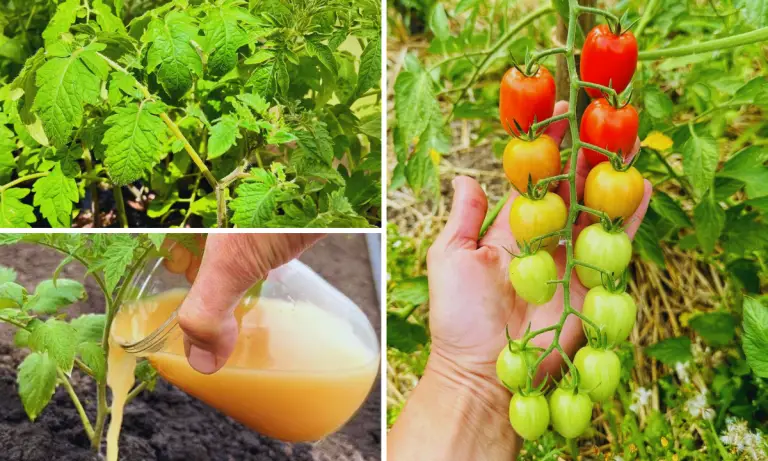What Veg To Sow In February
As we transition from the depths of winter to the promising days of spring, February presents an exciting opportunity to kickstart your vegetable garden. Let’s explore the diverse range of vegetables that can be sown this month to prepare for the upcoming growing season.
Traditional Crops To Sow In February
In February, we can embark on sowing traditional crops that set the foundation for a bountiful harvest later in the year. From Broad Beans to Broccoli and Garlic, these resilient vegetables can thrive when given the right conditions and care.
Broad Beans
Sow Broad Beans outdoors if the soil is workable, avoiding frozen or waterlogged conditions. These hardy beans are a great addition to any vegetable garden, offering a nutritious and flavorful harvest.
Broccoli (sprouting)
Start off Sprouting Broccoli in covered spots like cold frames or greenhouses for optimal growth. Plant them in root trainers or deep module trays to nurture them indoors before transplanting them outside.
Garlic
Plant garlic bulbs in soil that is not frozen or waterlogged to ensure successful growth. February marks the ideal time for garlic planting, paving the way for robust and aromatic bulbs later on.
Lettuce
For an early crop of fresh lettuce, consider sowing seeds in a greenhouse or cold frame for protection. Transplant the seedlings outdoors once they are established, providing a steady supply of crisp and vibrant leaves.
Onions
Kickstart your onion cultivation by sowing seeds in trays under cover, ready for outdoor planting in the following month. Multi-sow onions for efficient growth, ensuring a plentiful harvest in the months to come.
Leeks
Follow the same process as with onions for sowing leeks, nurturing them indoors before transitioning them outside. Leeks thrive in cooler weather, offering a versatile and flavorful addition to your dishes.
Peas
While it may still be too cold to sow peas outdoors, consider starting them in root trainers in a greenhouse. Move them outside in March for continued growth and eventual harvest of tender and sweet peas.
Carrots
Begin sowing carrots outdoors with protective cloches or in warmer regions for successful germination. Varieties like Amsterdam Forcing are well-suited for early sowings, providing a crunchy and vibrant addition to your vegetable patch.
Beetroot
Initiate beetroot cultivation in a greenhouse or outdoors in milder climates, starting them in module trays before transplanting them in late March. Beetroot offers a colorful and nutritious addition to salads and dishes.
Spinach
A resilient plant, spinach can be started outdoors in the south or in a greenhouse for regions with challenging conditions. Enjoy a fresh supply of nutrient-rich spinach leaves for salads and cooking.
Brassicas
Sow a variety of brassicas such as Cauliflowers, Cabbages, and Broccoli in the greenhouse to ensure healthy growth and robust plants. These versatile vegetables offer a range of flavors and culinary possibilities for your kitchen.
Early Indoor Starts
For plants with longer growing seasons, consider starting seeds indoors early to maximize their potential. With the right setup including a propagator, heated mat, and grow light, you can kickstart the growth of peppers, tomatoes, and eggplants for a fruitful harvest.
Peppers
Sow pepper seeds indoors for a head start on the growing season, ensuring mature and robust plants for outdoor transplantation. Utilize a propagator and heated mat for optimal germination, providing ample space and light for vigorous pepper growth.
Tomatoes
Kickstart your tomato crop by sowing seeds indoors under lights, extending your harvesting season and protecting against early frosts. Enjoy a prolonged harvest of juicy and flavorful tomatoes by starting early and nurturing your plants indoors.
Eggplant
Similar to tomatoes, eggplants benefit from indoor sowing and grow light utilization for strong and healthy plants. Provide ample space for their growth indoors before transitioning them to the greenhouse for optimal fruiting.
Onions
Give your onions a head start by sowing them indoors in January and February, ensuring ample time for growth and development from seed to mature plant. Learn more about the intricacies of sowing onions to kickstart your onion cultivation journey.
Benefits of Sowing Vegetables in February
Sowing vegetables in February offers several advantages. First and foremost, it extends the growing season, providing ample time for plants to mature before the onset of summer heat. Additionally, early sowing enables gardeners to stagger plantings, ensuring a continuous harvest throughout the season. Moreover, February sowings often face less competition from weeds and pests, as these are typically less active in cooler temperatures.
Popular Vegetables to Sow in February
Leafy Greens
Leafy greens such as spinach, lettuce, and kale thrive in the cool, moist conditions of early spring. Sowing these vegetables in February allows them to establish robust root systems before the arrival of warmer weather.
Root Vegetables
Root vegetables like carrots, radishes, and turnips are well-suited to February sowings. Their hardy nature enables them to withstand the lingering cold of late winter while producing tender, flavorful roots.
Herbs
Herbs such as parsley, cilantro, and chives can be sown in February for a steady supply of fresh flavors throughout the growing season. These versatile plants thrive in cooler temperatures and are quick to establish.
Brassicas
Brassicas, including broccoli, cabbage, and Brussels sprouts, benefit from early sowings in February. By starting these crops indoors or under protective coverings, gardeners can ensure healthy transplants for later transplanting.
Factors to Consider Before Sowing Vegetables in February
Before diving into February sowings, it’s essential to consider several factors that can influence the success of your crops.
Climate
The climate of your region plays a significant role in determining which vegetables are suitable for February sowings. While some areas experience mild winters conducive to early planting, others may still contend with frost and freezing temperatures.
Soil Conditions
Well-drained, fertile soil is essential for successful February sowings. Ensure that your garden beds are adequately amended with compost or organic matter to provide the necessary nutrients for plant growth.
Sunlight
Pay attention to the amount of sunlight your garden receives, as this can impact the growth and development of your vegetables. Choose sunny, sheltered locations for optimal results.
Preparation Before Sowing
Seed Selection
Select high-quality seeds from reputable suppliers to ensure germination success. Consider the specific requirements of each vegetable variety, including preferred soil type, sunlight exposure, and spacing.
Soil Preparation
Prepare your garden beds by loosening the soil and removing any debris or weeds. Incorporate compost or aged manure to improve soil structure and fertility.
Gardening Tools
Gather essential gardening tools such as trowels, rakes, and watering cans to facilitate the sowing process. Ensure that your tools are clean and in good condition for optimal performance.
Sowing Techniques
Direct Sowing
Some vegetables, such as radishes and lettuce, can be sown directly into the garden soil. Follow seed packet instructions for proper spacing and depth.
Starting Indoors
For vegetables that require a longer growing season, such as tomatoes and peppers, starting seeds indoors is advisable. Use seed trays or pots filled with seed starting mix, and provide adequate warmth and light for germination.
Caring for Sown Vegetables
Once your seeds are sown, proper care is essential to ensure healthy growth and development.
Watering
Maintain consistent moisture levels in the soil by watering regularly, especially during dry periods. Avoid overwatering, as this can lead to root rot and other moisture-related issues.
Weeding
Keep garden beds free from weeds, which compete with vegetables for nutrients and water. Use mulch to suppress weed growth and conserve soil moisture.
Pest Control
Monitor plants for signs of pests such as aphids, caterpillars, and snails. Employ natural pest control methods such as handpicking, companion planting, and biological controls to minimize damage.
Harvesting
Knowing when and how to harvest your vegetables is crucial for optimal flavor and quality.
Timing
Harvest leafy greens and herbs when they reach the desired size, typically before they bolt or flower. Root vegetables can be harvested as soon as they reach maturity, indicated by their size and color.
Methods
Use sharp scissors or pruners to harvest leafy greens and herbs, taking care to avoid damaging the plant. For root vegetables, gently loosen the soil around the base of the plant and carefully lift them from the ground.
Conclusion
Sowing vegetables in February opens up a world of possibilities for gardeners eager to get a head start on the growing season. By selecting the right vegetables, preparing the soil, and providing proper care, you can enjoy a bountiful harvest of fresh, homegrown produce. So why wait? Roll up your sleeves, grab your gardening tools, and start sowing your way to a successful vegetable garden this February!






